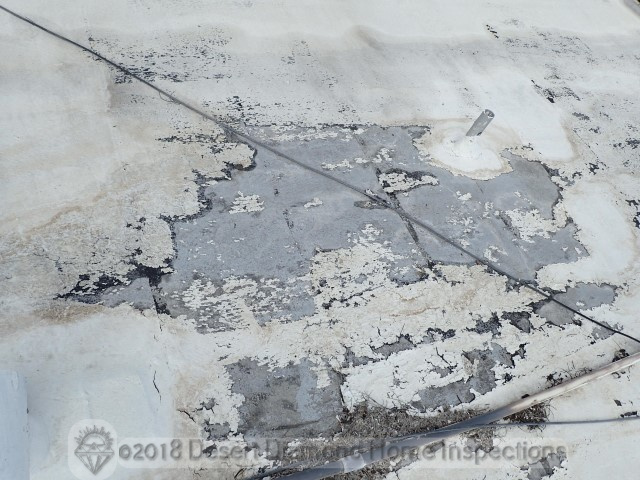Roof maintenance is the first article in our series of top 10 home maintenance tips. These tips are based on our experience from inspecting homes in Tucson where we see certain issues on a regular basis. Issues that could have been prevented with some easy and affordable proactive maintenance. Proactive home maintenance helps prevent unpleasant surprises and major damage and keeps maintenance and repair costs down. We hope you find these tips helpful and use them to keep your home in good shape.
Roof maintenance
Yes, roof coverings can last 10, 20, or 30 years or more (depending on type). However, they only will last that long if the home owner maintains them. Even a brand-new roof can leak after just a few years if neglected. It is imperative that you inspect your roof every year for the following issues and have it repaired promptly by a qualified licensed roofing professional.
Damage
Every roof will experience damage – period. This could be due to normal wear-and-tear, extreme weather like hail or wind storms, poor installation, or lack of maintenance. If you catch the damage early and repair it right away, the repair will be cheap and it will prevent bigger issues such as leaks.
Asphalt shingle roofs – Wind can lift up and tear off individual shingle tabs. Tree branches rubbing on shingles for a long time can damage or wear through them. Replace any missing or damaged shingle tabs.
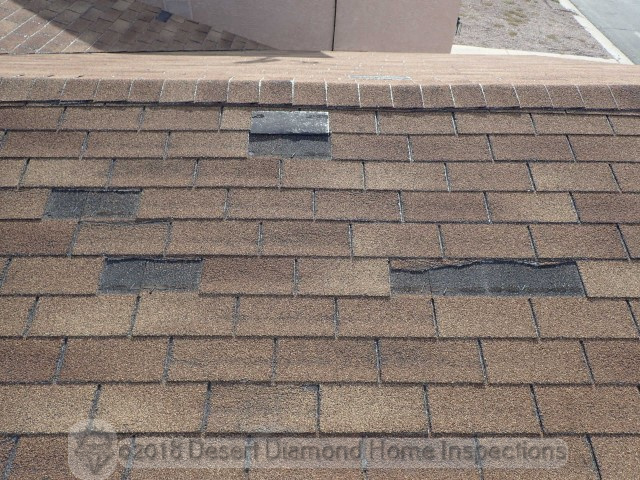
Concrete tile roofs – Concrete tiles can break from exposure to the extreme temperatures and age or wind rattling them around. If not properly fastened in place, they can also slip out of place, exposing the underlayment as a result. Replace any broken and secure any slipped tiles.
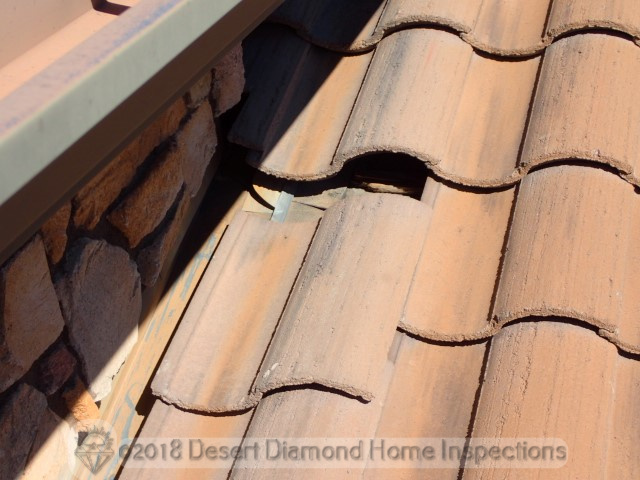
The concrete tile is actually mainly decorative. Water will always get underneath the tile. It is the underlayment under the tile that is the waterproof membrane. The underlayment deteriorates slowly over time and requires replacement after 15 to 20 years. If a concrete tile slips and exposes the underlayment to the sun, the underlayment deteriorates very quickly. In return, this exposes the wood decking underneath which will rot when rained on, leading to leaks into the attic and house. Keeping the underlayment protected and in good repair is essential.
Spanish tile roofs – Spanish tile roofs face many of the same issues as concrete tile roofs. Except the clay tiles are much more fragile than concrete tiles.
Flat roofs – The membrane on flat roofs can experience damage from hail storms, prolonged exposure to moisture, and deterioration of the roof coating. Repair any damaged areas promptly so water cannot find a way underneath. Re-apply two coats of quality elastomeric paint to the roof every five years.
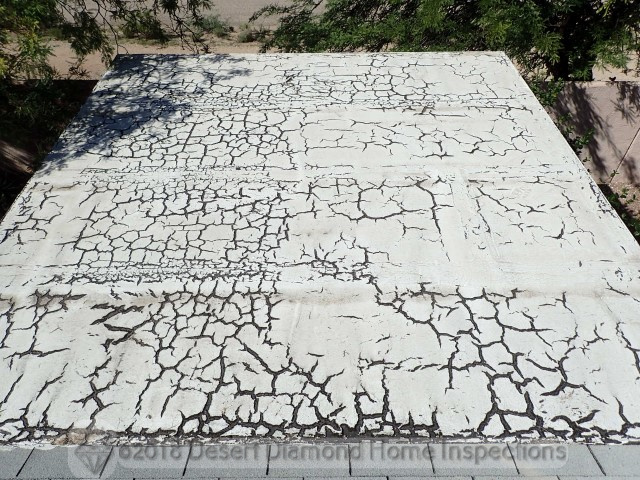
Skylights – While skylights last a long time, they will gradually deteriorate due to heat and sunlight, resulting in cracks. They can also experience damage from hail. Examine all skylights and replace any damaged domes.
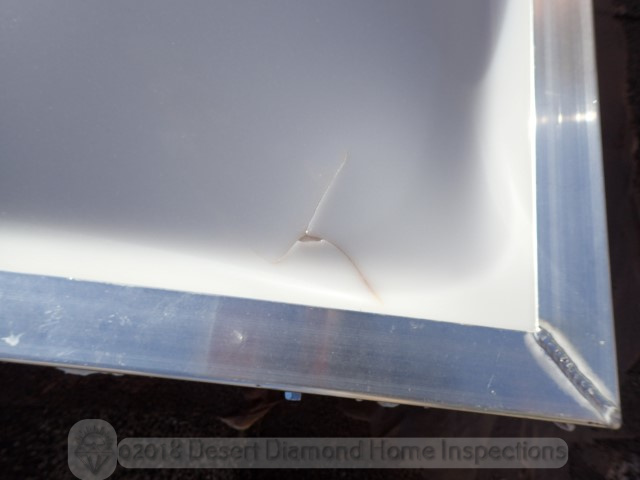
Debris
You’d be surprised how much debris from trees and bushes ends up on roofs. Debris is very bad for roofs for several reasons. When it collects in drainage channels such as scuppers or valley flashings, it blocks the flow of water from running off of the roof like it should. As a result, the water will find another way to go. That way is usually where you do not want it to go. On flat roofs, debris collects in big clumps that act like sponges. They store water, preventing the roof from drying, leading to quick deterioration of the roof covering. Remove any tree debris from your roof and keep it clean.
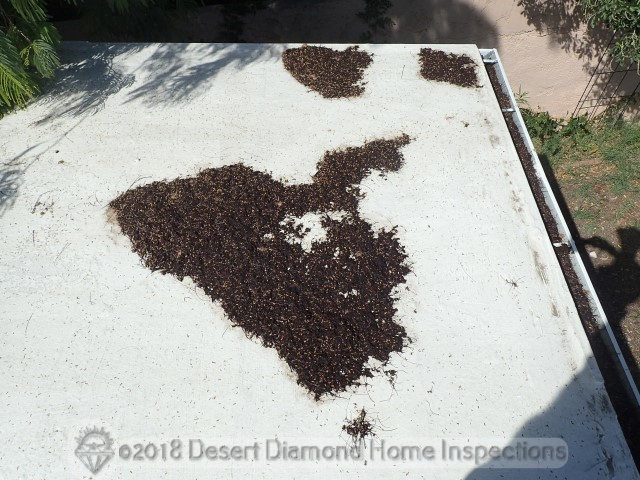
Drainage
When it rains here in Arizona, it usually rains hard. You want to make sure that all that water can get off of your roof quickly and follows the path it should take. Check the drainage paths such as valley flashings, scuppers, gutters, and downspouts and ensure that they are clear and in good condition.
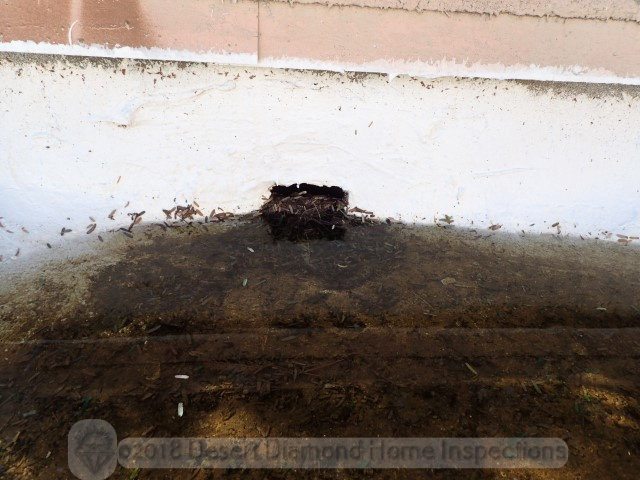
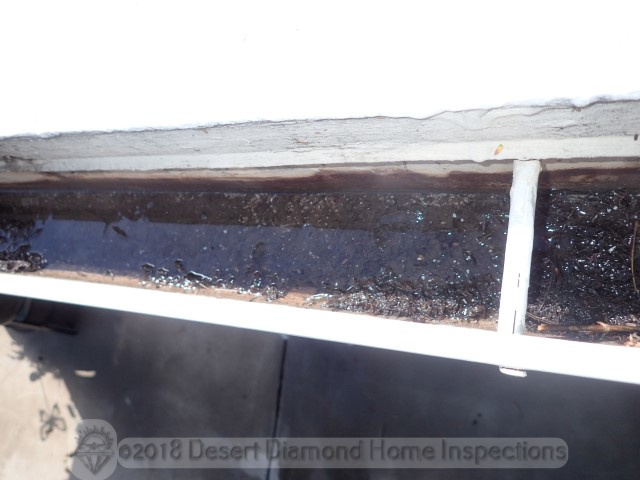
For flat roofs, there are a few additional issues that can negatively affect drainage: ponding and damming.
Ponding: If a flat roof is properly pitched, water can run off by gravity. Water never remains on the roof after a rain and it can dry quickly. However, we see many flat roofs that have spots that are wavy or have slight depressions. As a result, water will pool or pond in those areas instead of running off. After the rain stops, these areas will retain water for hours or days until it eventually evaporates, leaving a layer of dust or dirt behind. In those areas, the roof is exposed to moisture much longer, which leads to much faster deterioration. You must monitor these areas regularly and keep them clean and sealed.
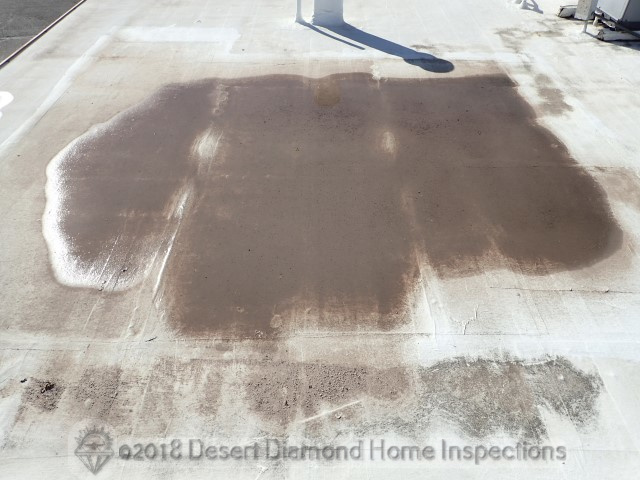
Damming: There should never be any objects lying directly on the surface of a flat roof. However, we see many flat roofs with cables (e.g. for TV), pipes (e.g. AC condensate drain pipes), or conduits (e.g. for electrical cabling) in direct contact with the roof surface. They will stick to the roof coating, start trapping tree debris, and end up acting like a dam, preventing water from running off of the roof as intended.
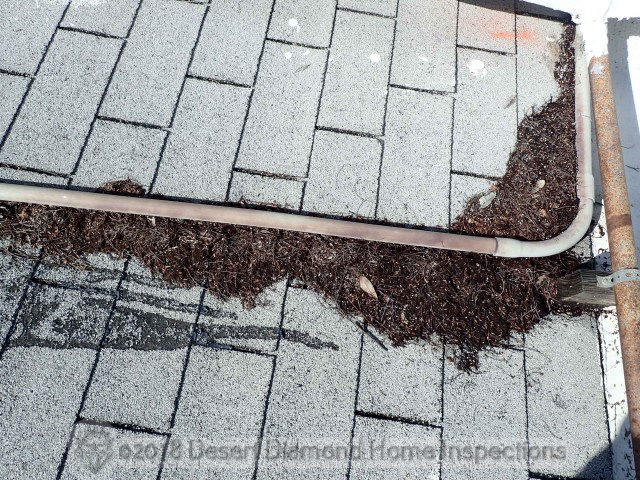
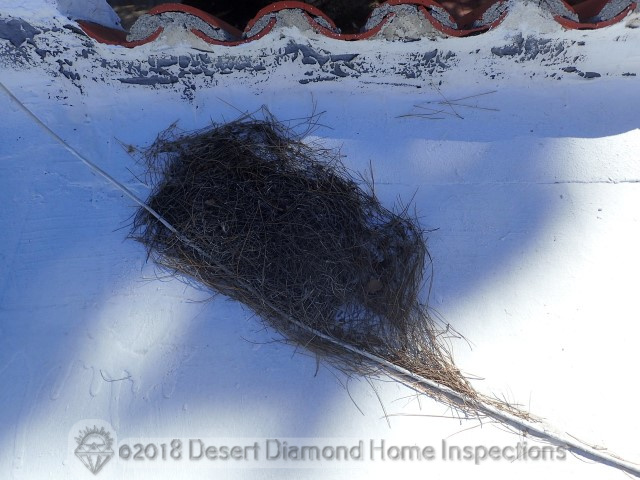
You must either remove such objects from the roof if they are no longer needed, or elevate them with wood blocks so water can pass underneath.
When
Put an annual reminder on your calendar for March or April to inspect your roof. You want to do this before monsoon season starts for two reasons:
- Have your roof in good shape before the storms start and have peace of mind that you won’t have to worry about leaks.
- If the roof needs repairs, it is pretty easy to schedule a roofer during this time. However, if you wait until after the storms start, it could be weeks before a roofer will be able to come out.
Conclusion
Annual roof maintenance is extremely important. If you spend a little bit of time and money every year to keep your roof clean, your roof will last a long time and keep you and your house dry. It will also prevent unpleasant surprises such as unexpected leaks and resulting repairs that could cost thousands of dollars

